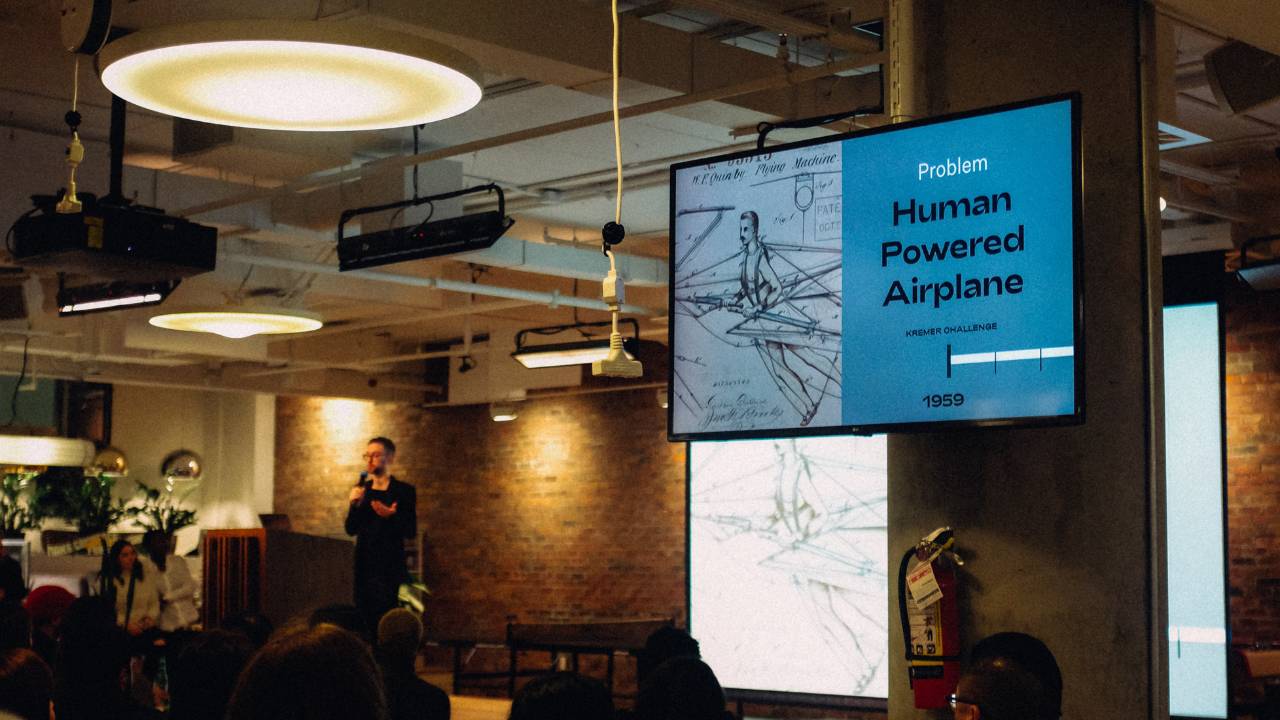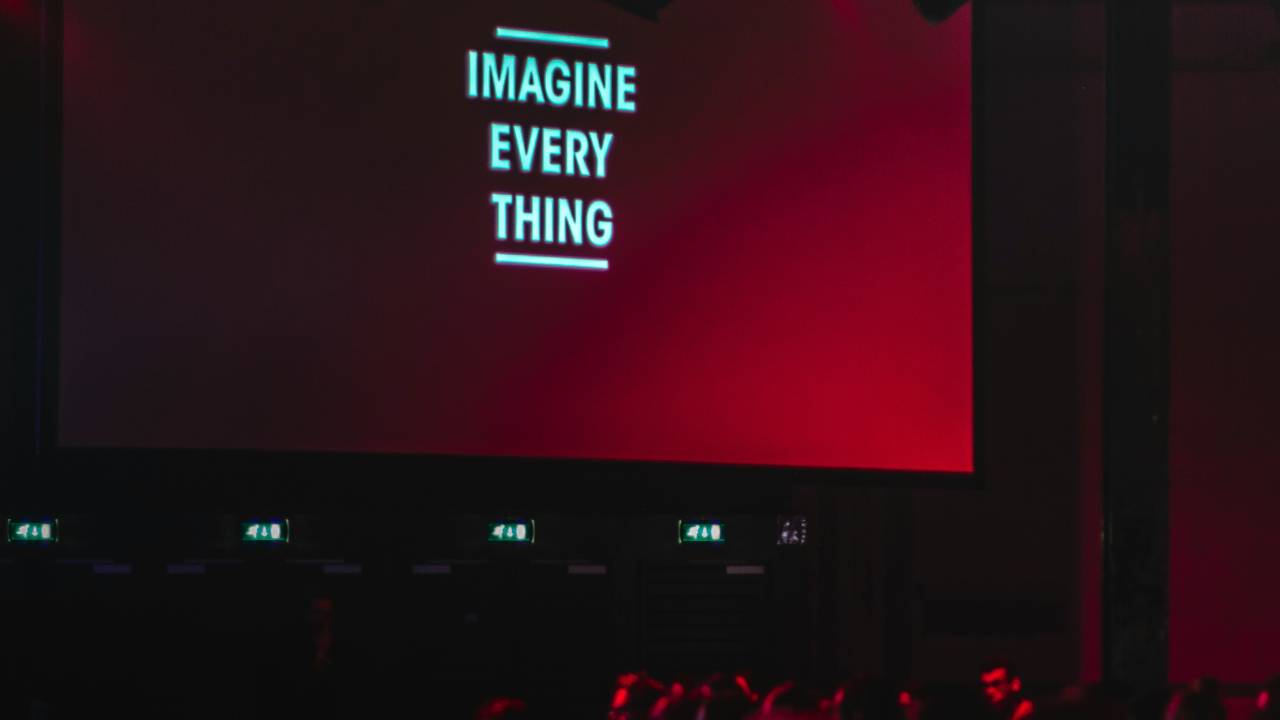As you plan your next event, consider the profound impact that transformative event signage strategies can have on branding, design, and customer experience. From the moment your attendees arrive, well-designed event signage can instil a sense of anticipation and excitement, guiding them seamlessly through the venue while reinforcing your brand identity.
An effective event signage strategy goes beyond simplistic and functional signs, instead incorporating elements that work in harmony with your branding, design, and aesthetic aims. This helps to create a more immersive environment for your guests, leaving a lasting impression long after the event is over.
Strategic Planning for Event Signage
Understanding Audience and Venue
When planning for event signage, it is crucial to understand your audience and the venue itself. Research the demographics of your attendees to tailor your messages effectively. An outdoor event will have different requirements compared to indoor events. Be sure to take into consideration the event space and high-traffic areas for optimal signage placement.
Setting Clear Objectives
Define your signage objectives from the outset to guide your decision-making process. Whether it’s for wayfinding, marketing, or branding purposes, having clear goals ensures consistent communication. Use analytics to track engagement and assess your signage’s effectiveness.
Design Principles and Branding Guidelines
Establishing strong design principles is vital to achieving brand recognition. Your event signage should adhere to your branding guidelines. Be consistent with fonts, colours, and logos to create a cohesive brand identity. Take your sponsor’s graphics and logos into consideration, too, as they form an integral part of the event. Vinehall Signage is one specialist that can help bring your vision to life while maintaining your brand’s essence.
Choosing the Right Type of Signage
With various signage types available, it’s important to select the most suitable for your event. Some options include digital signage, banners, decals, neon signs, and wooden signs. For instance, digital signage can be highly effective for dynamic content and engagement, whereas banners might be more suitable for sponsor recognition.
Logistical Considerations
- Directional signage – Guide attendees to key locations such as registration, stages, and restrooms.
- Installation – Ensure proper installation to guarantee safety and durability.
- Lines and furniture – Use signage to manage lines, designate seating or furniture arrangements and maintain order during the event.
Engaging Event Signage Solutions

Interactivity and Technology Integration
Incorporating interactivity and technology into your event signage can greatly enhance user experience and engagement. For example, using interactive digital signage enables attendees to access relevant information at their fingertips. By incorporating QR codes or linking signage to social media platforms, you can encourage attendees to interact with your brand and stay connected. Even more, consider using augmented reality in your signage to create a unique brand experience that aligns with today’s tech-savvy consumers.
Innovative Signage Ideas
Unleashing your creativity for your event signage can create a lasting impression on potential customers. Some exceptional signage solutions include using social walls, which can showcase real-time social media updates, increasing customer engagement and encouraging user-generated content. You might also explore floating signs or free-standing oversized signs as an eye-catching solution to draw your audience’s attention. To add a unique touch, consider incorporating digital signs or even temporary graffiti to get your message across.
Leveraging Sponsor Logos and Messaging
Giving prominence to sponsor logos and messaging is a fantastic way to ensure proper branding, boost brand recognition, and strengthen relationships with your key partners. When creating event signage, consider showcasing your sponsors’ logos prominently and craft messaging that aligns with both your brand and your sponsor’s requirements, resulting in a strong collaboration that resonates with your audience.
Maximising Visibility in High Traffic Areas
Strategic placement of your signage is essential for maximising visibility and engagement. Focus on high-traffic areas such as entrances, exits, and main walkways to capture the attention of attendees. Incorporate wayfinding and directional signage to assist attendees in navigating the event and to further promote your brand. By positioning your signage in these key locations, your chances of attracting potential customers and boosting user engagement increases.
Tactical Implementation and Consistency

Effective Placement and Visibility
When installing your event signage, consider the areas with the highest foot traffic to ensure maximum visibility. Strategically place wayfinding signs in high-traffic areas to guide attendees and make their experience smooth and enjoyable. Some key factors when placing your event signage are:
- Proximity to entrances and exits
- Highly visible locations, such as near stages or activity hubs
- Pathways to restrooms or food areas
Material and Print Quality
Investing in high-quality printing, durable materials and professional installation for your signage can have a significant impact on the overall aesthetics of your event space. Here are a few points to keep in mind:
- Choose the appropriate material based on the intended location (indoors or outdoors)
- Invest in high-resolution printing to ensure readability and vibrant colours
- Factor in weather conditions – if your event is outdoors, ensure your signage is weather-resistant
Consistency Across All Signage
Maintaining consistency in your signage helps reinforce your brand identity and makes it easier for attendees to navigate the event. Here’s how to achieve that:
- Consistent colour palette – Use your brand’s specific colours across all signs for easy recognition.
- Unified design – Consistently utilise design elements like fonts and layout.
Branding Tool Integration
Integrating your branding tool within your signage strategy can help increase brand awareness. Here are a few ways to integrate your branding tool effectively:
- Apply your logo and taglines to prominent signage locations
- Use customised hashtags or social media handles for event promotion
- Incorporate key brand messaging in wayfinding or informational signage, while keeping text concise and informative
By tactically implementing your event signage strategy with consistency, you can enhance attendees’ experiences, ensure effective navigation and solidify your brand’s identity.
Post-Event Signage Analysis

Gathering Feedback and Insights
After the event, it’s crucial that you gather feedback from attendees, partners, and your own team. This valuable insight can help you to gain insights into the power of effective signage and improve future implementation. Consider creating a post-event survey for attendees and partners to share their thoughts, or even conduct informal chats on social media.
- Attendee insights – Explore how attendees perceive the event signage, and how it contributed to their overall customer experience. Did it help them find activities, build trust, and align with your brand mission?
- Partner feedback – Did the event signage support partners’ goals? Did they feel it helped in building relationships with attendees and enhancing communication with their target audience?
Measuring Engagement and Impact
By measuring the impact of your transformative event signage strategies, you can gain meaningful data on how effective your signage was in achieving desired outcomes including engagement, brand recognition, and marketing success. Use a combination of analytics tools and social media monitoring to paint a clear picture. Here are a few key metrics to track:
- On-site analytics – Observe customer experiences and gather statistics on foot traffic near your signage.
- Social media – Monitor posts and interactions related to your event – did attendees share or mention your signage? Did it create a buzz?
- Engagement – Track attendees’ interaction with the signs (e.g., scanning QR codes or visiting URLs) by using appropriate analytics tools.
Adapting Strategies for Future Events
Armed with feedback and data, you can now adapt your strategies to enhance the effectiveness of your event signage for your upcoming events. Here are a few suggestions:
- Refine your messaging – Use the feedback to ensure your signage communicates the intended message in a friendly, clear, and concise tone.
- Optimise placement – Review analytics data to find areas of high engagement and place your signage in these spots, ensuring maximum impact and visibility.
- Enhance design – Make improvements based on specific suggestions from attendees and partners (e.g., font size, colour scheme, or digital vs. static signs).
Ethical and Sustainable Practices
Environmental Considerations
When planning your transformative event signage strategy, it’s essential to put sustainability at the forefront of your decision-making. Here are a few ways you can ensure your signage is environmentally friendly:
- Choose sustainable materials – Opt for recyclable materials like cardboard, biodegradable vinyl, or bamboo. These options have a lower environmental impact than plastic or PVC.
- Reuse and repurpose – Design signage that can be used at multiple events or repurposed for different purposes to reduce waste.
- Eco-friendly installation – Select installation methods that have minimal environmental impact, such as using reusable cable ties or biodegradable tape.
Promoting Positive Brand Association
Your event signage plays a crucial role in defining your brand identity and establishing trust with partners, attendees, and the wider community. By implementing ethical and sustainable practices, you can associate your brand with positive values and enhance the event experience for everyone involved. Consider these tips:
- Highlight your mission – Use your signage to convey your commitment to sustainability and ethical practices. For example, include messages about reducing waste or sourcing materials responsibly.
- Develop partnerships that align with your values – Collaborate with suppliers and partners who share your dedication to sustainability to create a cohesive event experience.
Conclusion
Event signage plays a crucial role in creating a memorable first impression and enhancing your company’s visual presence. By incorporating these transformative strategies, you can effectively guide your customers through your event while standing out from the competition.
Happy planning, and here’s to crafting an unforgettable event!



